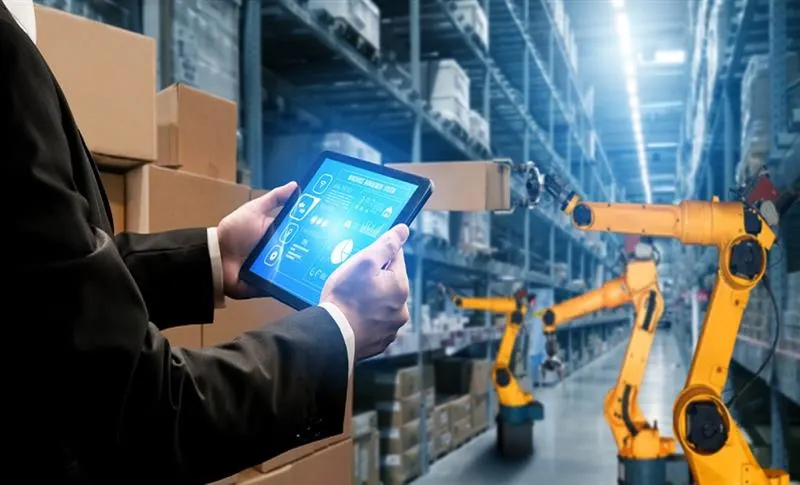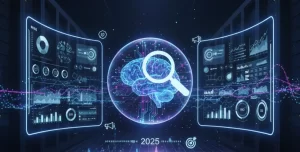
All About AI In Inventory Management
Table of Contents
Introduction
These days, inventory management is about much more than just counting boxes. It involves using data to identify patterns in demand and using those patterns to anticipate shifts in the market.
For this reason, traditional inventory management systems based on outdated recording of inventory on spreadsheets or antiquated ERPs can no longer keep pace with the changes occurring in the market in real-time, not to mention the swings experienced during seasonal business or behaviors embedded in consumer action.
This is where AI in inventory management is absolutely essential, not as a trend to follow, but as a necessity for transformative change.
The introduction of predictive analytics and intelligent automation learning into AI and continuous learning of data provides businesses with an entirely different approach to inventory, everything around stock management, stock optimization, and efficiency along the supply chain.
The world isn’t moving forward while you are stuck in a past process, and neither should your inventory management strategy.
Intro to AI in Inventory Management
AI in inventory management is transforming how businesses track, store, and move goods in today’s hyper-connected supply chains. By leveraging AI and machine learning development, companies can now automate tedious tasks, improve demand forecasting, and optimize inventory levels in real time. Unlike traditional systems, these smart models analyze massive volumes of data, predict demand patterns, and balance stock more accurately, eliminating costly overstocks and dreaded stockouts.
AI in Inventory Management
Demand Forecasting Accuracy
AI in inventory management is changing demand forecasting and predictive analytics with machine learning that explores historical sales, seasonal trends, economic indicators, and even weather data, to predict with uncanny accuracy future demand.
These forecasts get sharper over time as models adapt to new market behaviors. Businesses that hire AI developers or work with an artificial intelligence development company can drastically reduce forecast errors, helping them strike the perfect balance between overstock and stockouts, boosting profit while minimizing waste.
Real-Time Inventory Tracking
With AI powering smart shelves and IoT sensors, businesses can enable real-time tracking of inventory. This means instant visibility into stock levels at all locations, preventing human error and eliminating the need to wait for manual tracking to occur. You don’t just track, you act.
By partnering with an artificial intelligence development company, businesses can monitor fluctuations, respond immediately, and maintain inventory accuracy 24/7. It’s about turning reactive processes into proactive inventory intelligence.
Automated Reordering
Imagine a system that reorders stock before it runs out. That’s what is possible with AI and machine learning development. AI systems examine existing inventory, suppliers’ lead times, and demand signals to completely remove any human error from the re-ordering process.
This also automates the best process to get the needed product without delay. Thanks to AI development services, companies save hours of manual planning and keep their shelves fully stocked.
Reduced Carrying Costs
Holding on to too much stock drains your budget. AI changes that. By optimizing inventory through accurate forecasting and timely reordering, businesses reduce carrying costs, like warehousing and depreciation. AI in inventory management ensures you only store what’s needed, freeing up capital and space. Collaborating with a dedicated AI development team allows companies to trim the fat from inventory operations and improve cost efficiency across the board.
Prevention of Stockouts and Overstock
AI constantly monitors stock levels, sales trends, and supply chain performance to predict and prevent both overstock and stockouts. Instead of reacting to a shortage or excess, businesses using AI development can anticipate it and act before it happens.
This not only protects revenue but also improves customer trust and satisfaction. The result? Smarter shelves and happier customers.
Labor Cost Reduction
By automating tasks like stock counting, order generation, and reporting, AI slashes the need for manual labor. Teams spend less time on spreadsheets and more time on strategy.
Companies that hire AI developers can build custom tools that streamline repetitive work, reduce human error, and boost overall productivity. Fewer mistakes, faster processes, and smarter labor allocation- this is what AI development services bring to modern inventory management.
The Hidden Struggles of Traditional Inventory Management
Human Error in Stock Tracking
Manual inventory tracking is a breeding ground for mistakes. Whether it’s a missed barcode scan, a mistyped SKU, or outdated stock entries, human error turns into stock inaccuracy, lost sales, and angry customers. These mistakes ripple through supply chains and mess with financial planning, vendor relationships, and customer satisfaction.
Traditional systems offer limited visibility and depend too much on people doing repetitive tasks perfectly, which is a lot to ask. AI, on the other hand, integrates with IoT and smart systems to give real-time stock updates without relying on humans to manually log every detail.
Overstocking and Stockouts
This is where things get painfully obvious. Traditional inventory setups either play it too safe or too risky. Overstocking ties up capital in unsold goods, wastes warehouse space, and often leads to product spoilage or markdowns.
Stockouts, on the flip side, mean lost sales, broken trust, and bad reviews. It’s a lose-lose. Because legacy systems lack predictive algorithms, they don’t flag risks before they hit. AI systems continuously learn from sales trends and supply chain data to anticipate shortages or gluts; traditional systems simply can’t keep up.
Inaccurate Demand Forecasting
One of the biggest pain points in traditional inventory systems is forecasting. Most legacy systems lean on historical sales data and basic trend lines, offering little room for adaptability.
They can’t keep up with variables like sudden market shifts, economic shifts, or a freak thunderstorm that disrupts shipping patterns. The result? Inventory plans that look fine on paper but collapse in practice, leaving shelves overstocked or painfully empty.
Without AI’s ability to analyze real-time trends, seasonality, and external market signals, businesses are gambling with demand predictions instead of planning with precision.
Rising Holding and Carrying Costs
Warehouse space isn’t free, and the longer you hold onto products that don’t move, the more money bleeds out. Traditional systems don’t have the brains to optimize inventory flow based on storage capacity, sales cycles, or supplier timing.
They just tell you what’s there, not what should be there. That inefficiency racks up holding costs, inflates insurance, and ties up cash you could use elsewhere. AI helps businesses minimize waste and run leaner by only stocking what’s needed—nothing more, nothing less.
Conclusion
As the speed of commerce continues to increase, coupled with customers becoming even more demanding, inventory management has to transition from reactive planning and manual estimation. Artificial intelligence (AI), machine learning (ML), and now even data science in general are not just buzzwords; they are an essential part of determining the future of many business functions.
When it comes to inventory management, AI has to be involved if you want to truly develop a nimble and intelligent inventory function.
AI will address carrying cost reduction, stockout prevention, and accuracy in forecasting.
If a business takes advantage of the right AI development services, it will be able to start to gain a competitive advantage, increase operational efficiency, and stabilize its growth system.
In a data-driven economy, intelligent inventory won’t be just a competitive advantage; it will be a necessity.
Want to keep up with our blog?
Our most valuable tips right inside your inbox, once per month.
Carol Blair
Carol Blair is the Content Manager at Hyperlink InfoSystem - Top App Development Company in the USA, where she leads content strategy focused on emerging technologies like AI, automation, and supply chain innovation. With a strong background in tech writing and digital storytelling, Carol specializes in making complex topics accessible to business professionals navigating digital transformation.





